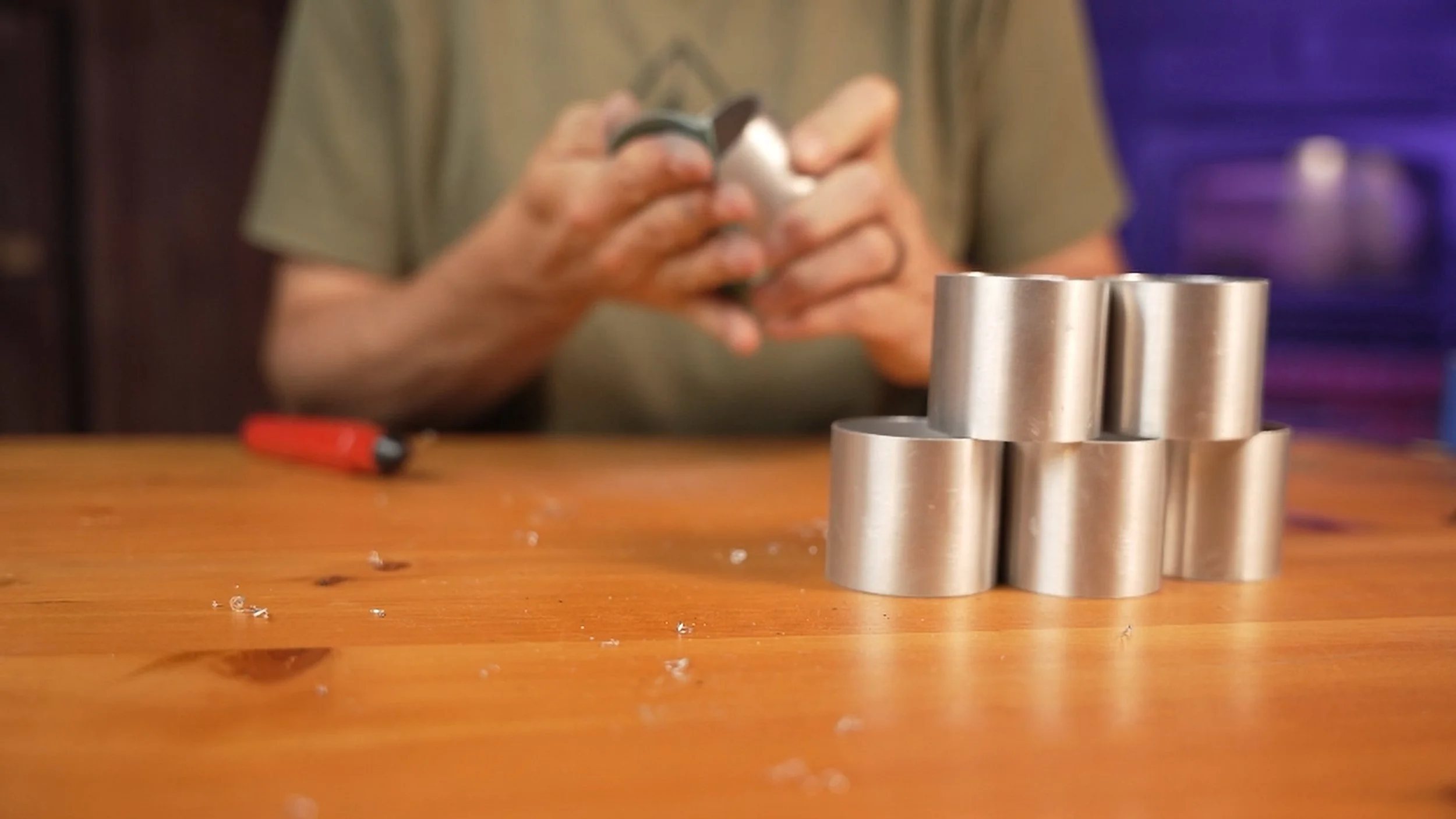Alumina Desiccant
Materials
Aluminum Tubes: https://amzn.to/3M43orl
Alumina Desiccant: https://amzn.to/3QmsS62
JB Weld Epoxy: https://amzn.to/3QmJxGG
Wire Mesh: https://amzn.to/46CgBA8 (20 or finer mesh is fine)
Optional
Silica Desiccant: https://amzn.to/3QnV2MX
Hacksaw: https://amzn.to/46A1HKx (I love this hacksaw)
Wax Paper: https://amzn.to/3QoaU31
Desiccant Issues
Silica gel beads are the main desiccant used in 3D printing, but there are two problems that I have with it. First, it breaks down over time, and second, those little beads are super annoying to work with.
Activated Alumina
At work, we use activated alumina. This is great because you can do the cycles of absorbing and drying out over and over again, and it never breaks down. The activated alumina is bigger than the silica (5mm vs 3mm typically), so we already are a little bit better there, but because alumina never breaks down, we can put it in a permanent housing that makes it a lot easier to work with.
The two places I typically use desiccant is in a filament dry box during active printing or short-term storage, and also in vacuum bags during long-term storage, and in both of these cases, using a cylindrical housing filled with desiccant would work perfect. The easiest would be to 3D print a cylinder that you put the desiccant into, but when you go to put it in the oven to recharge it, it would melt, which means you have to take the beads out first, so it's not really an easy permanent solution. Instead, I think aluminum is a better way to go. To get an aluminum cylinder, by far the easiest way that I know of is to use an aluminum air intake. They come in all sorts of different diameters.


Cylinder Materials
I really like the 51 millimeter because it fits in all the filament spools that I've ever had, but you can go with other sizes if you need to. After I cut the tube 45 millimeters long, I used a deburring tool to clean out the inside, and then I used some 400 grit sandpaper to clean the outside and to roughly smooth out the faces. Now I need to attach my 40 mesh mesh to the bottom of my tube. I used JB Weld because it is good up to 600 degrees Fahrenheit or 315 Celsius, which is plenty hot to handle the oven temperatures for drying out the desiccant.





Glue Up
Now, while I'm gluing all this up, I don't want it to stick to anything, so I'm gonna do this on top of some wax paper, and because I'm a belt and suspenders kind of guy, I'm also gonna use some paste wax on the wax paper. For my gluing, I'm gonna put a little bit of JB Weld onto the bottom of the aluminum tube, and then with the mesh sitting on top of the wax paper, I can just set it on top of it, let it sit for four to six hours, and then trim it up, and then we can just let it cure for the rest of the time around 15 hours. I let that epoxy harden up for six hours, pulled up the books, flipped it over so I could put in the desiccant. Then with a little piece of mesh, I put that on top, but this time for the epoxy, I used a little syringe with the epoxy in there so I could get it just on the top since it was on there, and I didn't want a ton of it getting on the desiccant. I actually wish I would have done this for the bottom as well because it worked out really nice. Once I got that top on there, I did the full curing the six hours plus the 15 to let it all fully harden up.






Clean Up
Now I just want to clean up the extra mesh. I have some high carbon shears that I can use to do most of it, and then I'll just grab some sandpaper and sand it smooth all the way around


Tips
It's a pretty simple build, but I do have a couple of tips for actual usage. In the small holes that go all the way through your filament holders, I recommend using a retaining clip to hold it in there. I'll have this file up if you want to download it, but they're pretty simple to design in any of your design software. To put that retaining clip, it'll hold it in there so that when it's turning, it won't fall out. Also, you don't even need the retaining clip. If you have a groove on the inside it just rolls in there as it's going, so you don't even need anything there. There's probably a ton of ways to hold these in the center of your filament spools, and so if you have any ideas, let me know down in the comments, especially if you end up designing something, post it there and link to it so that everybody can benefit. Not only is this form factor great for when you're actively using the filament, it's also ideal for long-term storage. I really like eSun’s vacuum bags. I'm not sponsored or anything, but I have been using them for a while now, but it's a little bit hard to have loose desiccant in the bag. With this, you can just put it in the center before you put it into the bag, and you've got desiccant with your vacuum bag. This is really great for nylon and other hydroscopic material. Now, after you've been using this for a while and you need to recharge it, this is where I think that it's so simple. You just take the whole thing, put it in your oven, do it at 225 C or 450 Fahrenheit for three or four hours, and it'll be completely recharged, and you can reuse it. The whole thing can go in there because we use the high temperature epoxy and its aluminum and metal mesh.






